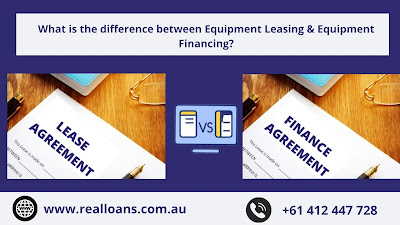7 Things You Need to Know about Low Doc Home Loans
If you're self-employed or run your own business, chances are you've hit a wall when applying for a traditional home loan. Lenders often ask for complete financial statements, tax returns, payslips, and formal proof of income over two years. But when your income fluctuates, or your paperwork looks different, it can feel like you're locked out of the housing market.
This is exactly where Low Doc Home Loans come into play.
Designed specifically for freelancers, sole traders, and small business owners, these make all the difference. They offer proof of your replayability without jumping through the usual documentation hoops. This makes them among the best low-doc home loans Australia offers for non-traditional income earners.
So, stick around and explore more important things that you must know before applying for a low-doc home loan in Australia.
Low Doc Doesn't Mean No Doc
Most people think that no doc means you dont need any document. But no, it's not true; you still need to prove your income, not with traditional paperwork. Low-doc home loan lenders usually accept:
A self-declared income statement
Business Activity Statements (BAS)
Recent business bank statements
A registered ABN (often at least 12 months old)
This setup is instrumental if your income is seasonal, fluctuates, or doesn't show up clearly on tax returns. But don't expect a shortcut, as lenders will still assess whether you're financially stable.
Whether you're applying for a low-doc construction loan or a standard home purchase, these basic requirements generally apply.
Lenders Look at the Big Picture
Traditional lenders focus heavily on income and tax returns. Low-doc lenders, on the other hand, look at your broader financial position.
They might consider:
Cash flow from business accounts
Consistency in income deposits
Your equity in the property
Other assets you own
This makes it a good option for financially solid people who can't prove it through conventional means. If you've been running a successful small business, you'll qualify even if you don't tick the usual boxes.
This approach also opens the door to specialized options like low-doc land loans.
A Clean Credit History Can Open More Doors
Even in low-doc lending, credit still matters. The cleaner your credit report, the better your chances, and the lower your interest rate.
If you've got a good repayment history and minimal debts, you could access rates almost on par with full-doc loans. But if your credit file has bruises, don't stress, some lenders are more flexible than others. Just expect slightly higher rates or stricter conditions.
Also, you can check your credit report before applying and fix any errors or unpaid debts for better rates. This holds whether you're applying for a residential loan or working with a construction loan broker on a development project.
You'll Need a Bigger Deposit (Usually 20–30%)
Low-doc loans are considered higher risk by lenders. So, most will ask for a larger deposit, usually between 20% and 30% of the property's value.
Having more skin in the game reduces the lender's exposure, which can work in your favour.
A bigger deposit can help you:
Secure a better interest rate.
Avoid or reduce Lenders Mortgage Insurance (LMI)
Strengthen your loan application.
If you've been saving hard or have equity in another property, use it to your advantage.
Not All Lenders Offer Low Doc Loans
Many major banks in Australia have moved away from low-doc lending. But here's the good news: Specialist non-bank lenders and smaller institutions still offer them.
These lenders tend to understand the self-employed lifestyle better and often have flexible lending criteria.
The trade-off? You might not get flashy banking apps or branch access, but you'll gain a loan that works for your reality. Whether for a first home, investment property, or even a low-doc land loan, it's about choosing the right fit.
They Can Be Used for More Than Just Buying a Home
One of the best-kept secrets about low-doc loans? They're versatile. You can use them for:
Buying a new home
Refinancing your current mortgage
Investing in a rental property
Consolidating high-interest debts
So, if you've been juggling multiple loans or want to access better equity in your current home, a low-doc refinance could free up cash and simplify your finances.
A Good Broker Can Make All the Difference
Let's be honest: navigating the low-doc loan landscape alone can feel overwhelming. The rules change from lender to lender. Some accept BAS only; others want bank statements. Some favour certain business types, others don't.
That's why a good mortgage broker with low-doc experience is worth their weight in gold. They know which lenders are flexible, who's offering decent rates, and what combinations of documents will get you through the approval stage.
In short, they cut the red tape and get you a deal that works.
Final Thoughts
Low-doc home loans have opened doors for thousands of Australians who earn differently. Whether you're a builder, freelance designer, consultant, or café owner, these loans provide an alternative path to homeownership without compromising credibility or flexibility.
From low-doc land loans to low-doc construction loans, the options today are broader than ever—and far more supportive of the way modern Aussies live and work.
But success comes down to preparation. Understand your options. Be honest about your income. And don't be afraid to ask for help from professionals who deal with this daily.
To know more, you can reach out to Realloans Australia.




Comments
Post a Comment